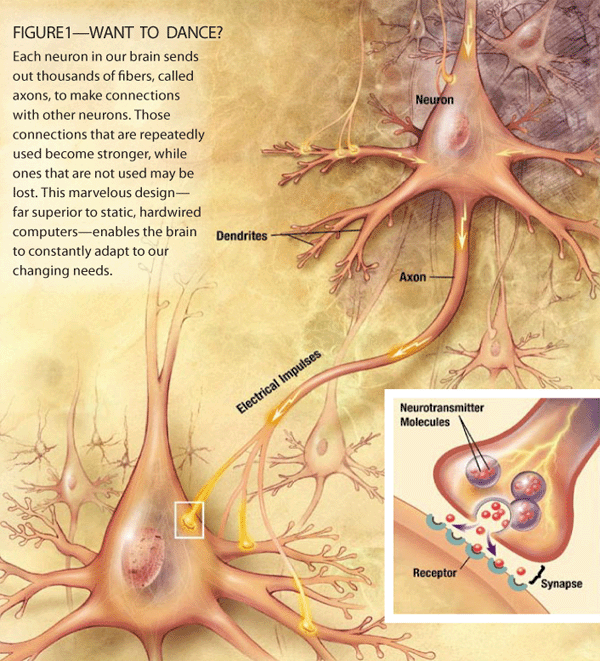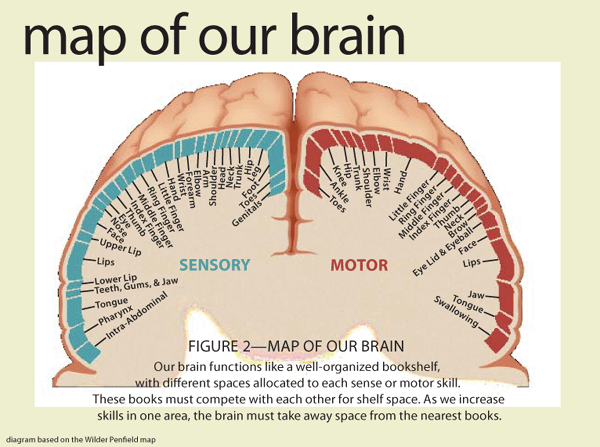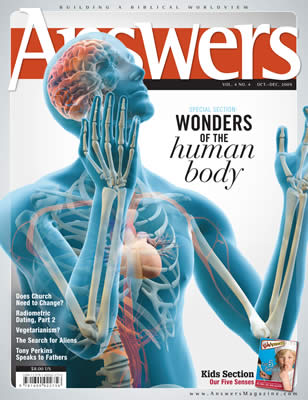Brain
Shaped By Experiences
Unlike any man-made computer, the brain is made of living cells that must constantly change as we acquire new skills and information. It appears that the physical architecture of the brain itself changes in response to our experiences. Such a marvelous design makes it possible for us to grow and adapt to our changing environment.
Lang Lang was only three. Curious and awkward, he pressed an ivory key for the first time on the big wooden piano—and loved the sound. With practice, the boy born in Shenyang, China, became a prodigy, winning international competitions by age 13. Lang Lang still amazes and inspires audiences, now playing with great symphony orchestras.
If we set our mind to it, we can do really amazing things. The more we practice, the better we become. In addition to music, we can learn to dribble a soccer ball, hit a softball, paint, sing, ride a bike, drive a car, fly a helicopter, or learn any other skill that requires precise muscle control and fine-tuned senses.
Yet acquiring skills would be impossible if our brains were “hardwired” at birth. To sort through all the data that our body’s sensors record, the brain has been designed to change. Our brain is not a computer, made of solid-state wires and silicon wafers. It is three pounds of living, growing cells that constantly form new connections and change old ones.
The brain’s flexibility enables us to quickly acquire new skills, learn new information, and create new memories. Further, if our brain suffers certain types of injury, brain cells can take over the function of the dead or damaged cells.
Modern imaging tools can now look inside the brain while it is still at work. For the first time, we are beginning to see just how marvelously God designed our brain to adapt to our ever-changing needs.
Music and the Brain
Neuroscience researchers have known for years that the brains of musicians have more grey matter in certain areas than most other people. Are they born with these differences, or do their brains change with experience? Neuroscientists have tended toward the latter view but lacked hard evidence.1
Recent studies have demonstrated that music training also improves skills in many areas, including fine motor skills and sound discrimination. Some researchers have even noticed improvement in attention, math skills, and geometry tasks.2 Imaging studies of the brain have confirmed that the networks of neurons associated with these abilities change physically, too.
Scientists have not been able to completely rule out the possibility of predisposition or innate structural differences in the brain that would account for musical ability, but the amount of tissue in different regions of the brain does tend to correlate with the amount of practice and training. Musicians, for example, have more tissue in regions responsible for sound discrimination and finger control. This and other evidence strongly suggests that experience alters the architecture of the brain. Neuroplasticity refers to the changes that take place as the neurons’ connections (called synapses) are generated, altered, and reinforced (Figure 1).

Location, Location, Location
One aspect of the brain that triggered my own interest in neuroscience is how the brain is laid out. The neurons that control our senses and motor skills are arranged into an orderly map in the brain, called a homunculus (Figure 2).

For example, the neurons responsible for touch are laid out in a three-dimensional sequence in the brain, known as a spatial trajectory. If two parts of the body, such as the thumb and index finger, are located next to each other physically, they also have corresponding neurons that are next to each other in the brain. So when scientists attempt to map the sensory neurons in the brain, they find neurons that respond to stimulation of the thumb next to neurons that respond to stimulation of the index finger and so on. The same holds true for neurons that control muscle movement.
Although the neurons in the brain mirror the arrangement of the body parts, they do not mirror the relative size of the body parts. For example, while our arms and legs are much larger than our thumb and lips, they occupy much less space in our brain. The fingers need more space because they require so many more neurons to control fine motor skills and delicate sensations.
Our other senses have similar orderly sequences in the brain. For example, the neurons involved in hearing are arranged by pitch, similar to the keys on a piano. Likewise, the neurons responsible for vision are arranged by sectors of our field of view. This creates an interesting challenge because we have two eyes that see overlapping fields of view. To compensate for this, the brain allocates alternating columns of neurons to the left and right eyes.
The overall pattern of neurons in the brain is laid out early in life. In some cases, it is critical that a body part gets the right stimulation at specific times during development. For example, if one eye of a cat is covered during the critical period so that no stimulation occurs, then the cat could be blind in that eye for life. The cat loses its sight because the neurons that would otherwise accept information from that eye are committed to the other eye. While changes to the brain are possible, they can be limited by prior experience.
Interestingly, if a finger is amputated or the nerve to the finger is destroyed, the neurons that were allocated to that finger become reallocated to the adjacent fingers. For example, if the index finger is lost, the neurons shift to covering the thumb and middle finger. In contrast, if a musician decides to practice with one finger more than all the other fingers, the space allocated for that finger will increase at the expense of the other fingers.
The brain functions like a bookshelf with limited shelf space. If you need to add more pages to one of the books, then the increase needs to come at the expense of pages from other, nearby books on the shelf.
Behaviors or senses that are used more, receive a greater allocation of space in the brain. This explains why individuals who are blind or deaf seem to have heightened sensitivity in other areas.
Practice Makes Perfect
Neurons make an astonishing number of connections with other neurons. An adult brain has around 100 billion neurons, and just one of those neurons can make tens of thousands of connections.
Initially, neurons send out fibers to a wide target area. Those connections that are repeatedly used become stronger, while those that are unused can be lost in a process called pruning. Neurons are constantly competing with each other for targets. Over time, each neuron becomes responsible for an increasingly smaller area.
Both positive and negative changes can be reinforced. For example, excessive use of alcohol or drugs can lead to changes in neuronal connections. Indeed, drug addiction is likely to be related to changes in neural circuits caused by the drug use.
Since experience alters the brain in both positive and negative ways, it is all the more important to live a godly life. Perhaps this is one reason that the Apostle Paul admonished Christians how to think: “Finally, brothers, whatever is true, whatever is noble, whatever is right, whatever is pure, whatever is lovely, whatever is admirable—if anything is excellent or praiseworthy—think about such things” (Philippians 4:8).
God’s Design of the Brain
The organization and layout of the nerve cells in the human brain is truly remarkable. The brain continues to change and adapt, as well as repair itself, throughout life. The brain follows an overall plan of development but then alters based on experience, stimulation, and the environment. Although I may be biased as a neuroscientist, I believe nothing provides greater testimony than the brain to how we are “fearfully and wonderfully made.”
Answers Magazine
October – December 2009
When it comes to God’s marvelous creation, nothing compares to the amazing design of the human body. From the protective garment of skin to the engineering of our bones and new discoveries about our brain, this issue is packed with testimony to the Master Designer.
Browse Issue SubscribeFootnotes
- C. Gaser and G. Schlaug, “Brain Structures Differ between Musicians and Non-Musicians,” Journal of Neuroscience 23(27): 9240–9245.
- B. Mauk, “Music Training Changes Brain Networks,” https://web.archive.org/web/20090524045217/http://www.dana.org/news/braininthenews/detail.aspx?id=21764
Recommended Resources

Answers in Genesis is an apologetics ministry, dedicated to helping Christians defend their faith and proclaim the good news of Jesus Christ.
- Customer Service 800.778.3390
- © 2025 Answers in Genesis





